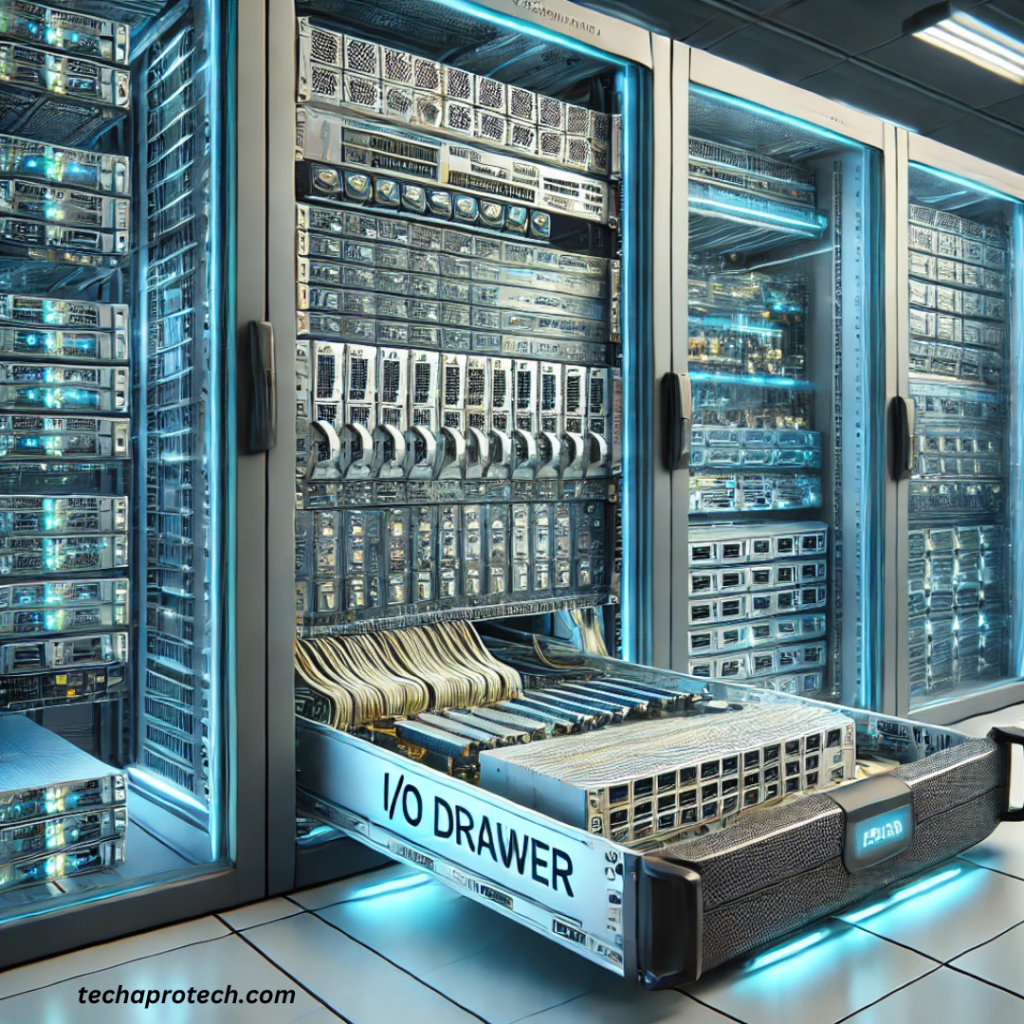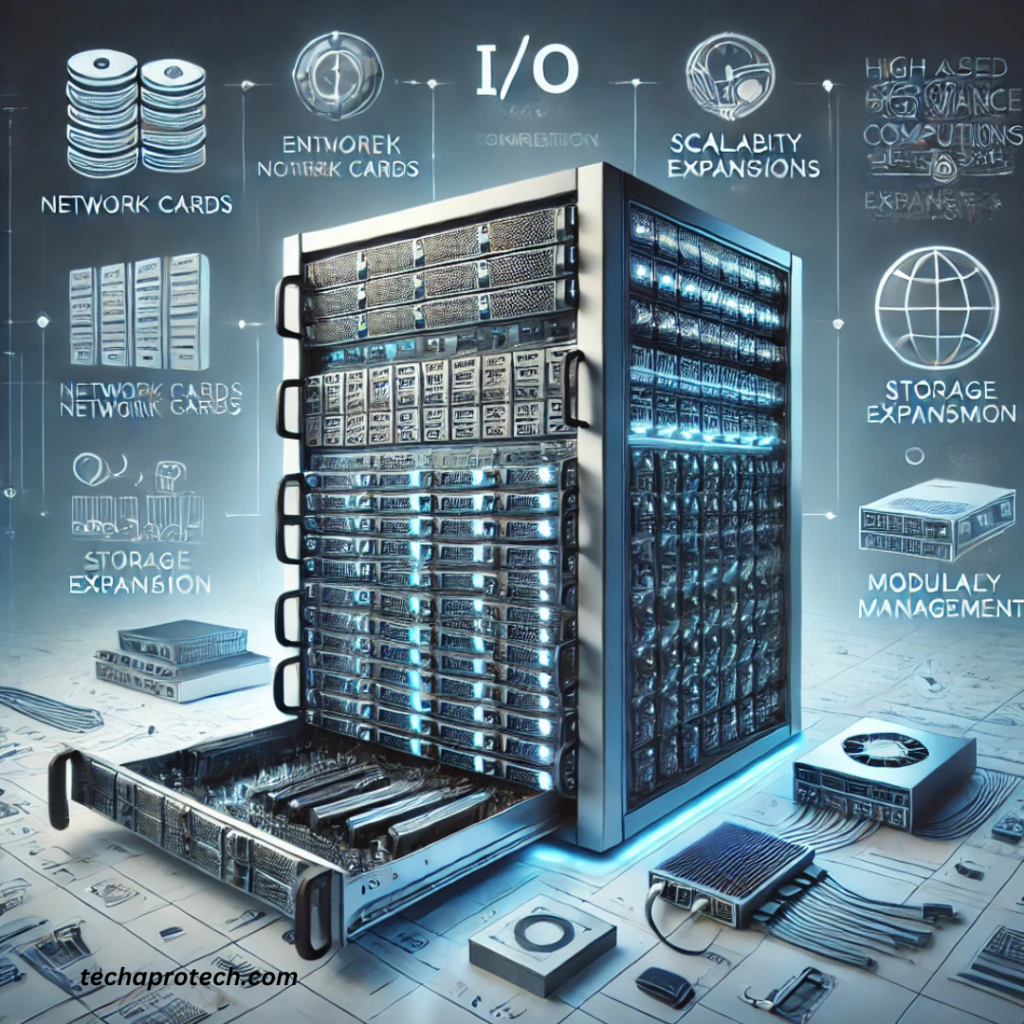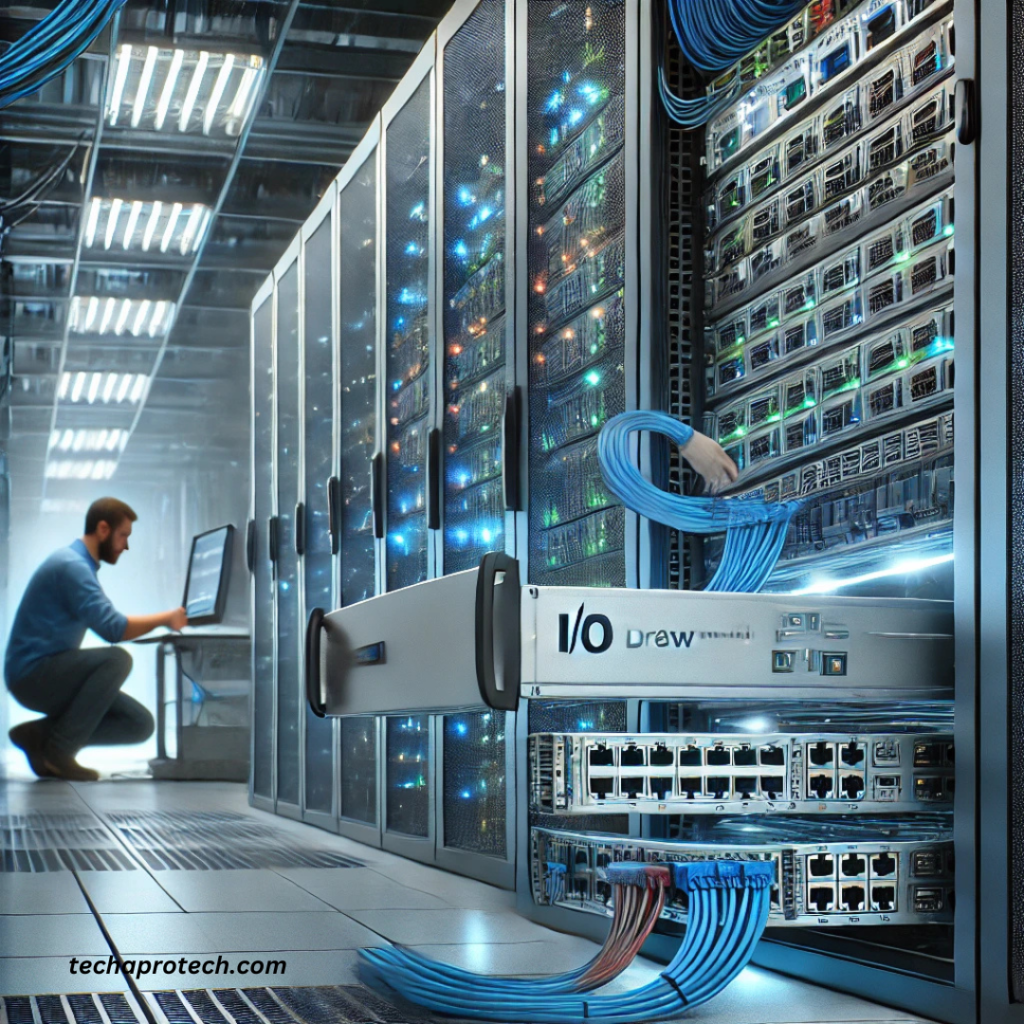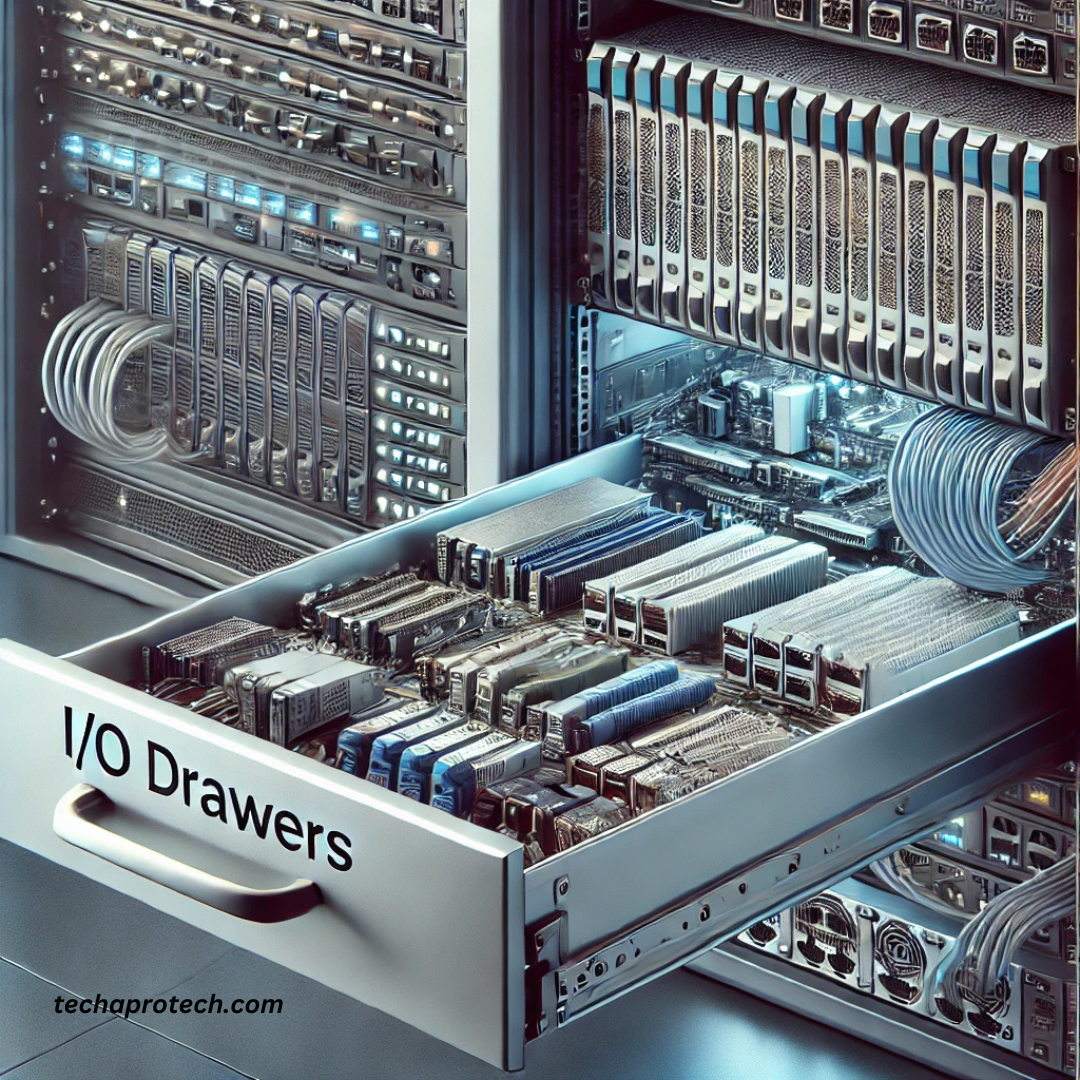While computer and data demands increase, it has become critically important to handle I/O or input/output operations in an optimized way. It can scale with performance. Among the technologies fulfilling these requirements as well as their potential solutions we find the I/O drawer which is the expansion facility enabling servers. Its some mainframes to incorporate more I/O devices and storages.
I/O drawers are useful for achieving high expansion rates and the greatest density. They are most relevant in branches of business that require working with large amounts of data. In an effort to analyze the use of I/O drawers today and their concepts. As well as to discuss their advantages, types, applicability, and types of I/O drawers, this article will discuss the following points.
What is an I/O Drawer?
An I/O drawer is defined as an outside unit or an expansion locker. It is dock to a server or mainframe so that input/Output apparatus can be connect to the drawer. This expansion method is important in data centers. Owing to the handling of large volumes of data traffic and peripheral connexons. It should not burden the internal components of the server. With more adapter, storage devices, network cards and other peripherals, I/O drawers make it possible for systems to meet certain needs in terms of I/O peripherals without necessarily requiring the overhaul of the entire I/O hardware system.
Commonly deployed in research and scientific applications, telecommunication, and cloud computing industries, I/O drawers are flexible, modular. It can be scale up or down depending on organization’s data requirements.
Key Features of I/O Drawer
High-Density Connectivity: I/O drawers are intend for installation of a number of I/O devices in a relatively limited area. They allow for connectivity options aggregation, which usually incorporate PCIe (Peripheral Component Interconnect Express) connectors, Fiber Channel cards and Ethernet.
Modular Design: Most of the I/O drawers are somewhat backward so that the users can build them in sections in response to similar sections being removed or added. These are so design to make it possible for the solution to be easily expand and also scalable.
Cooling Systems: The more data is transferred the more the need for efficient cooling the Computers and other hardware. I/O drawers sometimes have own provisions for cooling devices for keeping their temperature within optimum levels and avoiding a circumstance where they overheat.
Redundancy and High Availability: For reliability and availability to cover data or even service loss, high-performance I/O drawers are designed to come with both the spare parts and power supply.
Remote Management: Most I/O drawers have features that allow IT administrators to monitor and manage devices from a remote location as well as troubleshoot problems.

How I/O Drawers Work?
They are connected to the main server through a high-performance bus, preferably PCIe or other similar connexons which introduce low latency and allow for big data transfer. When connected, the operating system and applications that are existing on the server are able to identify the devices existing in these drawer as if they were installed on the server. This integration lets users complement a given hardware set without making changes in the server’s architecture.
In structures such as I/O drawers, it is possible to incorporate many peripheral cards or storage devices into a single structure since it is easily modular in design. It would also have because it provides the opportunity to increase or decrease depending on the needs in place, it is especially helpful in environments, where the need for data can change.
Benefits of I/O Drawers
Scalability: I/O drawers ensure that a certain physical or virtual processing power can be added in a server without implying the undertaking of a new physical server. Since data requirements are always on the rise, being able to integrate an I/O drawer that provides other connexons or storage space expands systems’ flexibility.
Cost-Efficiency of I/O Drawer: I/O drawers further enhance the current server capacity without having to acquire new equipment; therefore, it lowers the cost of pro temperature systems. We can also see that organizations can use the existing facilities while at the same time addressing new requirements.
Improved Data Management: I/O drawers adapt various data management tools such as RAID controllers and SSD, and as a result, incorporation is possible. This enhances the transmission of information, the storage and the rates of accessing stored information.
Enhanced System Performance: As external units for the main server, these drawers can minimize the centralization of data and hence, enhance the processing velocity of the I/O tasks. This becomes especially useful in data-driven industries nowadays.
Energy Efficiency: The current I/O Phase drawers are integrate with intelligent cooling and power consumption features to make them more energy sensitive. All of these features enable the cutting of operational costs and hence enshrine the element of sustainability.
Reduced Downtime: The building block of these drawers with redundant parts provide more of up time and system dependability. This is a unique design characteristic when one component fails the entire drawer is not affect resulting in some level of continuity.

Types of I/O Drawers
PCIe Expansion I/O Drawer: These are the most common type of I/O drawers. They are providing additional BI/O slots for the network adapters, raid controllers and GPU cards. They offer reliable and fast solutions since they have low response time required for many applications.
Storage Expansion I/O Drawer: Primarily used for I/O connexons, these I/O drawers allow for the integration of SSDs, HDDs and other I/O storage equipment. They are widely employee in applications where big volume of data is process, store or when creating backups and databases.
Hybrid I/O Drawer: Hybrid drawers are the same as riser drawers with additional PCIe or storage expansion slots for environments that require both.
Network-Specific: These drawers are intended to house particular network devices. It including high speed Ethernet adapters, fiber channel cards, and Network Interface Controllers (NICs). It can be use in Telecommunications and cloud service.
Practical Implementation of I/O Drawer
Compatibility of I/O Drawer: This implies that any of these drawer to be incorporate into a server should be compatible with the server’s operating system. Ensuring you cheque the specifications and compatibility documentation is very important in avoiding all these problems.
Bandwidth Requirements: Determine for the I/O devices that you plan to add the bandwidth requirement. It is therefore wise to make sure that the drawer and main sever are well provision. For bandwidth or else data traffic becomes a bottle neck.
Redundancy Needs of I/O Drawer: If continued operation is essential, seek these drawers that have two or more power supplies and cooling fans. This is something which is crucial for the organizations. This require data to be available to them in a continuous manner.
Physical Space: Also, focus on the physical configuration, or density, which measures space in your data center. E/I drawers can be up to 23 inches deep and some may extend into the rack space.
Cooling and Power: You get these drawers that means you will be adding more power and cooling requirements. Seek for drawers with specific efficient energy indicators to help reduce the pressure on the data center.
Security: Safety of data is questionable, particularly when one introduces other peripheral devices into the circulation. Make sure that these drawer fulfils the security criteria and has opportunities for the access to it.
Use Cases for I/O Drawers

Data Centers: Medium and large server complexes derive increased I/O power from I/O drawers. This is to add more power to connect and store. The data load increases without additional servers.
Scientific Research: Hosting scientific domains like genomics, climate modelling. Also artificial intelligence involves putting suffrage demands to compute power and storage. I/O drawers enable the distribution of research institutions’ resources at a reasonable cost.
Telecommunications: In this case, many telecom companies require the processing of high data rates. These drawers can help the network draw required sources more efficiently, hence enhancing the network’s performance and minimizing latency.
Financial Services: According to Mohsen Zadeh, in the area of finance low-latency I/O solutions are important. These drawers, thus, add the extra capability needed to handle enormous amounts of data.
Future of I/O Drawers
Increasingly, data requirements will remain high. Thus the need for flexible versatile solutions such as I/O drawers will be of higher demand. Due perhaps to the emergence of edge computing and intelligence in more advanced forms such as AI and machine learning. These drawers are certain to advance to provide for these trends. It is for this reason that we are likely to see future drawers with faster connexon speeds. Also better cooling options, and support for the latest I/O interfaces to provide business with even more efficient expandability options.
Conclusion
I/O drawer are also an indispensable component of server equipment. Also satisfying the need for high expandability, versatility, and the minimization of costs in dealing with large amounts of data. These units are designed to expand upon the demands of data centers, as well as many other applications, including scientific research. Future trends of the I/O drawers will persist as an effective solution for business expansion. Since firms will be able to control data and resources and organisms, profundity without having to constantly upgrade the core of their computers. For servers, storage, connectivity or performance, they are a smart and future-oriented form of high-performance computing.

